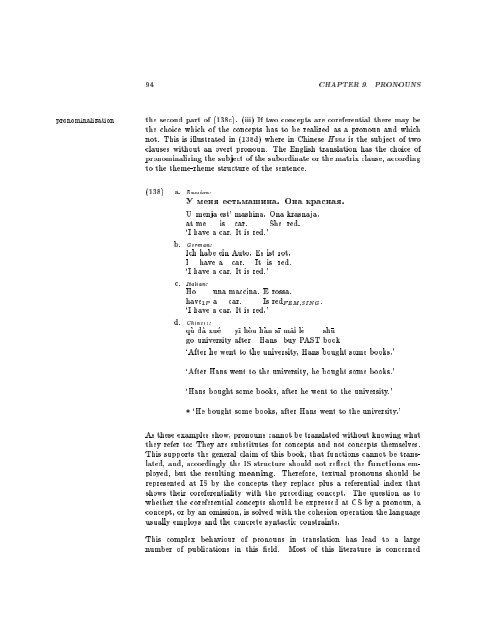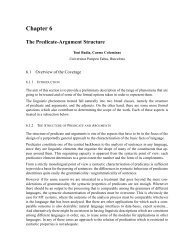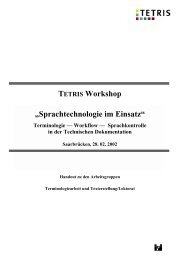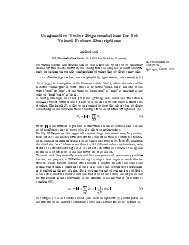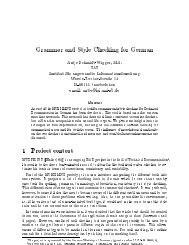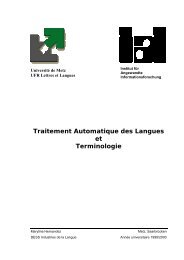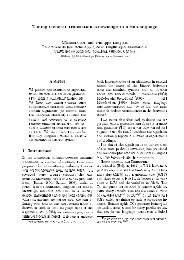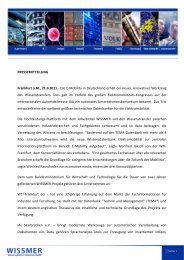Linguistic Modeling for Multilingual Machine Translation
Linguistic Modeling for Multilingual Machine Translation
Linguistic Modeling for Multilingual Machine Translation
Create successful ePaper yourself
Turn your PDF publications into a flip-book with our unique Google optimized e-Paper software.
94 CHAPTER 9. PRONOUNS<br />
pronominalization<br />
the second part of (138c). (iii) If two concepts are coreferential there may be<br />
the choice which of the concepts has to be realized as a pronoun and which<br />
not. This is illustrated in (138d) where in Chinese Hans is the subject of two<br />
clauses without an overt pronoun. The English translation has the choice of<br />
pronominalizing the subject of the subordinate or the matrix clause, according<br />
to the theme-rheme structure of the sentence.<br />
(138) a. Russian:<br />
U men est~maxina. Ona krasna.<br />
U menja est' mashina. Ona krasnaja.<br />
at me is car. She red.<br />
`I have a car. It is red.'<br />
b. German:<br />
Ich habe ein Auto. Es ist rot.<br />
I have a car. It is red.<br />
`I have a car. It is red.'<br />
c. Italian:<br />
Ho una maccina. E rossa.<br />
have 1P a car. Is red FEMSING .<br />
`I have a car. It is red.'<br />
d. Chinese:<br />
qu<br />
go<br />
da xue<br />
university<br />
y hou<br />
after<br />
han s<br />
Hans<br />
mai l_e shu<br />
buy PAST book<br />
`After he went to the university, Hans bought some books.'<br />
`After Hans went totheuniversity, hebought some books.'<br />
`Hans bought some books, after he went to the university.'<br />
* `He bought some books, after Hans went to the university.'<br />
As these examples show, pronouns cannot be translated without knowing what<br />
they refer to: They are substitutes <strong>for</strong> concepts and not concepts themselves.<br />
This supports the general claim of this book, that functions cannot be translated,<br />
and, accordingly the IS structure should not reect the functions employed,<br />
but the resulting meaning. There<strong>for</strong>e, textual pronouns should be<br />
represented at IS by the concepts they replace plus a referential index that<br />
shows their coreferentiality with the preceding concept. The question as to<br />
whether the coreferential concepts should be expressed at CS by a pronoun, a<br />
concept, or by an omission, is solved with the cohesion operation the language<br />
usually employs and the concrete syntactic constraints.<br />
This complex behaviour of pronouns in translation has lead to a large<br />
number of publications in this eld. Most of this literature is concerned


